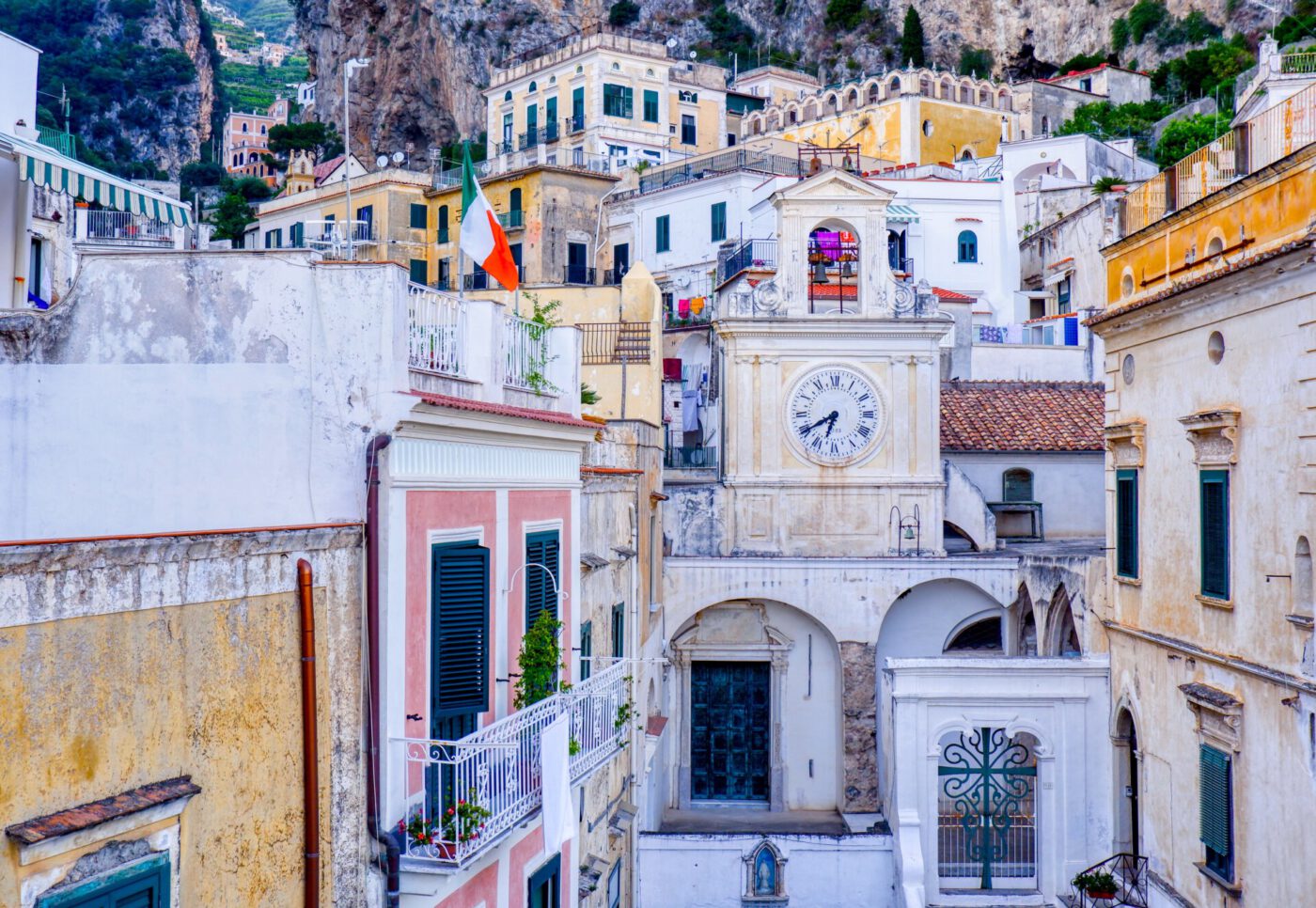In the placid days that followed the relaxation of the first wave pandemic restrictions, my then-boyfriend and I decided to head to the very heart of the dolce vita. The conditions were simply ideal. It was June, so the heat was still bearable. American tourists were still locked out of Europe, and the general scarcity of international tourists meant that Airbnbs were cheap enough for us to set up base in Atrani, the smallest town on the Coast–and in Italy, for that matter–for a week. Little did we know that reaching heaven required a trip through the hell of the Italian train system.
If you don’t have a car, are scared to drive or–as in my case–everyone else is scared of you driving, reaching the Amalfi coast is no joke. After waking up at dawn to catch a five hour high-speed train to Naples, we got on a much smaller and much slower carriage to Salerno. The air-conditioning we had hardly noticed on the high-speed Frecciarossa was suddenly the only thing on our minds. The hinterland of Campania passed, unhurried, before our sweaty eyes. As the one Italian of the two, I was responsible for ensuring the success of the trip: as my perspiring travel companion watched the monotonous countryside painfully unfold, doubtfully looking at me from time to time, I smiled, entertained. I knew the train was just the beginning of our ascent to the Coast.
Indeed, we soon found ourselves on the most memorable bus ride of our lives. If you have never felt the pleasure (or the rush of adrenaline) of riding a bus from the 1980s on the Amalfitana road, you should put it on your to do list. It’s an out of body experience. Because the bus travels the cliffside road which overlooks the gulf between Salerno and Nerano, you feel as if you’re constantly on the point of falling into the crystalline waters below. A scary yet marvellously intoxicating journey.
Once safely in Atrani, we didn’t dare relax. Instead, we exploited the last dash of adrenaline still pumping in our veins and climbed the 500 steps that took us to la Casa di Masaniello. The house, which is said to once have belonged to the mother of a 17th-century Neapolitan revolutionary, is the heaven you’ve always dreamed of reaching.
Perched at the peak of a cliff and nestled under a mountain, the view you get from this secret refuge might be the best in the entire Amalfi coast. The eye stretches to capture the infinity of the blue waters, which contrast with the immaculate, white-painted houses of the town and the golden mosaic of the Santa Maria Maddalena church. When the Latins used to say “per aspera ad astra” (“through hardships, to the stars”), they probably had Atrani in mind.

Exploring Atrani means getting lost. From the Piazzetta, where you can admire the immaculate facade of the Church of San Salvatore de’ Birecto (which boasts an imposing, equally blinding staircase), a web of small streets will take you into the depths of town. The alleys are so tiny, their network so intricate, the small altars found at the crossroads so many, that one feels instantly brought to distant, somehow forgotten, time. The only people you’ll meet on your path are locals or a very few (and very lost) French tourists. Be aware: refreshing your Italian skills won’t be enough. However, a few, well-chosen Neapolitan words should do the trick, particularly when interpreting the writing on the walls–often poetry, composed in the local dialect. Struck by such words as “l’ammore è … o core che te crea no scumpiglio” (“love is… the heart creating chaos in yourself”) and fascinated by the handmade tiles that decorate each and every entry hall, you’ll walk up and down a thousand stairways and, without even noticing, you’ll find yourself at the beach.
Atrani’s beach is somewhat less crowded than the one in nearby Amalfi, allowing you to finally taste some well-deserved relaxation. For lunch by the sea, head to Le Arcate, a local restaurant next to the idyllic pebble beach. If a late breakfast is more of your thing, Bar Antico Caffé Vittoria awaits you in the Piazzetta, where a few other restaurants are worth noting for the local specials with a contemporary twist (Ristorante Savò won’t disappoint) or for a quiet dinner in the little square (the family-run Il Veliero). These establishments seem miles away from the tourist-haunted destinations elsewhere on the coast.
If you are in the mood to explore, Amalfi is a stone’s throw away, easily reached by walking up and down Italy’s smallest comune’s tiny streets. An evening there is a must, and your digestion will surely thank you for walking back to town. If hiking doesn’t scare you, walking to Ravello–past the picturesque valley of the Dragon river where locals grow world-famous lemons–is a more defying, yet immensely gratifying option. Rumour has it that a dragon found the valley cosy enough to make it his home. My advice? Try and forget his fire breaths and descend back into town, dancing on the ringing bells of the Duomo.








